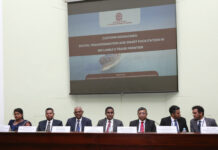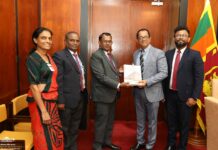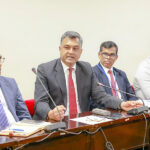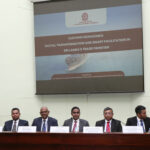An experts committee tasked with overseeing the recently announced ban on chemical fertiliser imports has recommended to President Gotabaya Rajapaksa not to impose the ban on the tea and rubber sectors until sufficient quantities of organic fertiliser were available and to defer the withdrawal of the subsidy until such time, said Plantations Minister, Ramesh Pathirana.
The committee appointed by the minister was to advice the Presidential Task Force on Creating a Green Sri Lanka with Sustainable Solutions to Climate Change. Its recommendation was that the withdrawal of the plantation sector chemical fertiliser subsidy be carried out gradually as the correction of the soil structure will considerably minimise the use of fertiliser but is possible only over a period of time.
An interim report was submitted with these recommendations to President Rajapaksa and a full report would follow, Minister Pathirana said.
Until sufficient quantities of organic fertiliser are available, lifting the ban on chemical fertiliser for the tea and rubber sectors is recommend, subject to certain conditions, according to the recommendation of the committee members representing the plantations sector. They were appointed separately by Minister Pathirana to explore the possibility of curtailing the use of chemical fertiliser and gradually switching to using organic fertiliser.
There is indiscriminate overuse of chemical fertiliser. This is because of the fertiliser subsidy, which has been provided for decades, stated Malinga Gunaratne, a committee member who is also in the Presidential Task Force. He added that the committee felt that an incentive to those producing organic fertiliser should be given.
The pH values of soil in almost all tea estates will be checked within the next 6-8 months, Minister Pathirana stated.
The members have recommended making a pH assessment on soil before the fertiliser is applied. ‘It would also be necessary for the officials of the Tea Research Institute (TRI), the Rubber Research Institute (RRI) and the Tea Smallholdings Development Authority (TSHDA) to educate all concerned on the correct procedure in obtaining soil samples for assessment of pH and also leaf samples for assessment of nutrients in rubber,” the committee recommends.
Mr. Gunaratne noted that as only about 30 per cent of the chemical fertiliser was absorbed by the soil and the rest evaporated, the committee members recommended that fertiliser be injected into the soil instead of applying on the top soil to arrest this situation. He pointed out that chemical fertiliser had 46.5 percent nitrogen while organic fertilizer had 2 percent nitrogen.
The members also recommended tea ‘bush by bush’ (plant by plant) fertilisation – again to minimise chemical fertiliser application.
In the case of paddy cultivation, the soil’s pH value should be between 5.5 and 6.5. Mr. Gunaratne said that applying nitrogen/chemical fertiliser to paddy fields without correcting the soil’s pH value would be futile.
He said the current 180 million tons of chemical fertiliser imports could be cut to a conservative estimate of 150 million tons if the recommendations were carried out.












